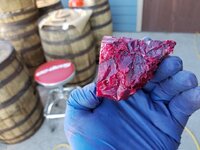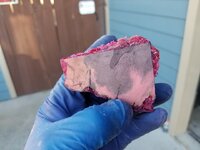Greetings all,
First time using cactus juice, and not sure that I am doing it right.
I vacuum it until I get no bubbles, leave it under vacuum for an hour or so, and then I release the vacuum and let the burl sit overnight for 24 hours.
Take it out of the juice and dab the excess. Wrap in foil, and stick in the oven at 200ish for a few hours.
I think that up to this point, everything is according to spec.
After I unwrapped the wood, there is a great deal of resin dried up on the outside of the burl.
Is this normal, and what is the best way to remove it so that I can cast it in alumalite?
Thank you.
First time using cactus juice, and not sure that I am doing it right.
I vacuum it until I get no bubbles, leave it under vacuum for an hour or so, and then I release the vacuum and let the burl sit overnight for 24 hours.
Take it out of the juice and dab the excess. Wrap in foil, and stick in the oven at 200ish for a few hours.
I think that up to this point, everything is according to spec.
After I unwrapped the wood, there is a great deal of resin dried up on the outside of the burl.
Is this normal, and what is the best way to remove it so that I can cast it in alumalite?
Thank you.


